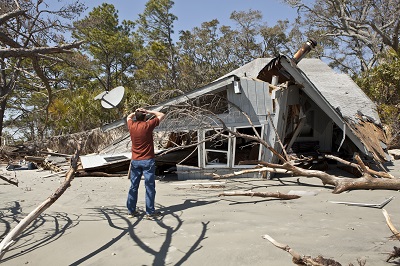IRS Casualty Loss Deduction Harvey CPA Houston

Houston CPA – IRS Casualty Loss Deduction- Impacted by Hurricane Harvey
The following counties have been designated as federal disaster areas: Aransas, Bee, Brazoria, Calhoun, Chambers, Fort Bend, Galveston, Goliad, Harris, Jackson, Kleberg, Liberty, Matagorda, Nueces, Refugio, San Patricio, Victoria, and Wharton. If you are resident of the aforementioned counties and have experienced a loss due to Hurricane Harvey, you can deduct the loss on either your 2016 or 2017 income tax return. If your 2016 return was filed already, you have until October 15, 2018, to file an amended 2016 return to claim the casualty loss deduction and get a refund, or you can wait and include it on your 2017 return that you file next year.
Things you should do immediately after a Casualty for Tax Purposes:
1. Begin Reconstructing your Records:
- Personal Residence/Real Property: Take photos immediately after the casualty to establish the extent of the damage. Take pictures of specific valuable items if possible, rather than just a general picture of the damage. This helps establish the extent of damage to your personal items. Contact the Title Company that handled the purchase to obtain copies of your closing documents. Your real estate broker may also be able to help. Check with appraisal companies to locate a library of old multiple listing books. These can be used for “comps” to establish a basis or fair market value. “Comps” are comparable sales within the same neighborhood. Check with your mortgage company for copies of any appraisals or other information they may have about cost or fair market value. Regarding improvements, get statements from the contractors verifying their work and cost, if available. If a home improvement loan was obtained, then the amount of the loan may help establish the cost of the improvements. Inherited Property – Check court records for probate values. If a trust or estate existed, contact the attorney who handled the estate or trust. If no other records are available – Check at the county assessor’s office for old records about the property. Look for assessed value and ask for the percentage of assessment to value at the time of purchase. This is a rough guess, but better than no records at all.
- Vehicles: Kelly’s Blue Book, NADA, and Edmunds are available online and a great resource for vehicle values. You can also look at car sales advertisements for the period of when your vehicle was destroyed for fair market value. Be sure to keep copies of those advertisements.
- Personal Property: The volume of personal property may make it difficult to rebuild records. One way is to draw pictures of each room. You can draw a floor plan showing where each piece of furniture used to be. Then, you would draw pictures of each room looking toward any shelves or tables. These do not have to be perfect, just good enough to show where everything was. Spend extra time drawing shelves with memorabilia on them. Do the same for all rooms in the house. Reconstruct what was there, especially furniture that would have held items — drawers, dressers, and shelves. Also, remember to include garages, attics, and basements. Then, go online and see if you find these items for sale and price of the items. Print out and save these website pages to document the values. You can also look for similar items in a thrift store, such as Goodwill, to establish a fair market value. You can also walk through stores and look for comparable items. Again, look online as a source for fair market value. If you bought items using a credit card, you can go online and get statements showing those purchases.
2. File an insurance claim:
The IRS requires you to file a timely insurance claim first and then take a casualty loss deduction for any loss that is not covered. The IRS will disallow your casualty loss deduction in its entirety if you fail to make a timely insurance claim, even if the loss would have only been partially covered.
3.Document your Casualty Losses:
It will likely be too much work to try to compile this information at tax time. I suggest you immediately begin documenting your losses through an excel spreadsheet or some other method in which you list all the specific items in one place in an organized way.
